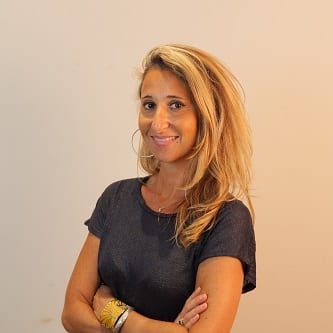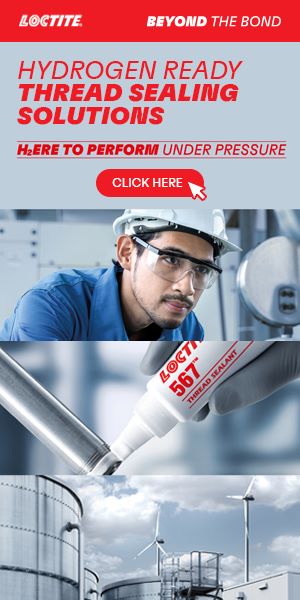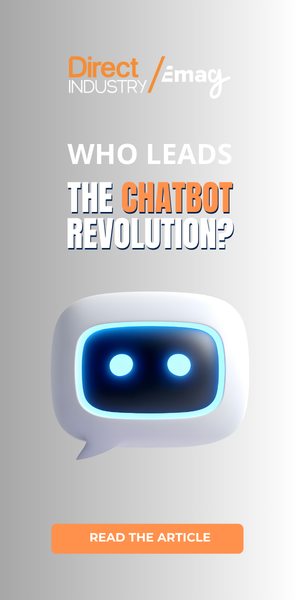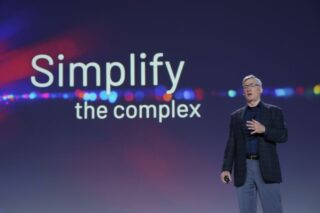The Prod & Pack trade show returns to Lyon from November 18 to 20, 2025. As the largest French event covering the entire value chain—from process to palletizing—the show is now setting its sights higher: to become a European, even international, benchmark for packaging and industrial production. Ahead of the opening, DirectIndustry spoke with David Luche, Deputy Director of the show (part of GL Events group). In this interview, he discusses the ambitions, innovations, and key issues shaping the 2025 edition, which is dedicated to both technological and environmental transitions.
Prod & Pack is established as France’s largest event covering the entire production chain. What is your vision for the 2025 edition?
David Luche: “It’s something we’re very proud of. Prod & Pack 2025 will be the largest French trade show covering the entire industrial value chain, from product manufacturing to packaging. This year, we’re hosting 190 international exhibitors—mainly from Germany, Italy, Spain, and a smaller proportion from China—representing a 15–20% increase compared to the previous edition. That’s about 25% of the show’s total offering. This momentum demonstrates our growing international reach, showing that the show is entering a new dimension.
Our long-term goal is clear: to move from a major national event to a leading European trade show. It’s a genuine change in scale, a strategic shift that we’re beginning now, before aiming for an even broader international influence by 2027.”
How are you working to strengthen this European and international dimension?
David Luche: “Our development is not just about growing in size—it’s also about enriching our content. We’re multiplying partnerships with professional organizations, especially from Germany, Italy, and Spain, and we’re integrating more regulatory and forward-looking content.
For example, this year’s show will feature a dedicated area on European packaging legislation, focusing in particular on the PPWR directive. We’ll host unions, trade federations, and experts to analyze the impact of these regulations material by material. It’s a concrete way to connect the show to European realities.
In addition, our location is a real advantage: Lyon is France’s leading industrial region, with a highly diverse ecosystem—agri-food, plastics, chemicals, pharmaceuticals, heavy industry—and it enjoys a central position in Europe, easily accessible and already home to major industrial events like Global Industrie. This makes Lyon a strategic base for our European development.”
Read also
A delegation from Ivory Coast will also be attending. What does this signify?
David Luche: “It’s a first this year. We’ll be welcoming a delegation from Ivory Coast. It was initiated by the Ivorian Consulate, which identified Prod & Pack as a reference event for packaging solutions. They won’t be exhibiting, but rather industrial visitors looking for solutions tailored to their development needs—especially in the agri-food sector, where packaging plays a crucial role in food safety.
This perfectly illustrates our openness: while Prod & Pack remains anchored in Europe, it also attracts emerging countries seeking expertise and industrial know-how.”
Your baseline this year is “Packed with Innovation (Quand l’innovation s’emballe).” How does it express your positioning?
David Luche: “That phrase captures the very spirit of Prod & Pack. Ours is the only French trade show that covers the entire industrial cycle, from production to packaging and end-of-life. We start from a simple observation: you can’t design a product without simultaneously thinking about how it will be packaged—you must think of the product as a whole.
Innovation therefore goes beyond R&D or product design: it includes the entire industrial process. Quand l’innovation s’emballe—Packed with innovation—is both a metaphor and a reality: we package innovations, but we also innovate in packaging. These two dimensions are inseparable.”
This cross-functional approach seems to be at the heart of your philosophy.
David Luche: “Exactly. To industrialize an innovation, you must be able to package it efficiently. If every new product requires rethinking the entire production line, the business model collapses. Conversely, packaging itself can become a driver of innovation—through eco-design, reuse, or material optimization.
That’s the essence of Prod & Pack: a truly integrated approach, deeply rooted in industrial reality and the everyday life of factories. We’re talking about practical, scalable solutions, not trendy concepts.”
You’re presenting a showroom with mini-factories. What will visitors discover there?
David Luche: “We wanted to go beyond words and show innovation in action. The 2025 showroom will feature demonstration islands built around the five major packaging materials—wood, glass, metal, paper/cardboard, and plastic. A total of 22 participants will present around ten products packaged live.
Our aim is to show that you can change materials while maintaining the same packaging speeds and performance levels. We’ll also highlight energy performance gains, which are essential to remain competitive and decarbonized.
We want visitors to see real industrial performance—in terms of recyclability, energy efficiency, and reuse. We were actually the first, back in 2021, to tackle the issue of industrial reuse, and we’re continuing to promote scalable, real-world solutions.
The showroom will also feature more compact machines, designed for SMEs that can’t expand their sites, as well as bio-based and recycled materials—alternatives that respond to today’s undeniable environmental imperatives. These demonstrations will illustrate the ongoing transition toward less plastic and 100% recyclable packaging by 2030, in line with European directives.”
Read also
Which packaging material do you find most promising today?
David Luche: “Paper and cardboard are clearly the most dynamic. They offer a credible alternative to plastic and drive a great deal of innovation. Of the ten demonstrations in the showroom, four will feature paper-cardboard packaging.
That said, we must remain realistic: plastic won’t disappear. It retains essential barrier properties, especially in food and healthcare. But it’s evolving—becoming more responsible, with partially recycled or lightweighted plastics. The goal isn’t total substitution—it’s optimization.”
Will you also feature bio-based materials?
David Luche: “Absolutely. We’ll showcase plastics made from algae, plant fibers, or starch, as well as compostable and reusable packaging. The idea is to rethink usage: tomorrow, a product packaged in plastic today might be packaged in cardboard, glass, or aluminum instead. It all depends on industrial feasibility.
Take an example from the UK: people now drink wine in cans—something that’s still hard to imagine in France, where glass remains the standard. But habits evolve, and technology will help us reinvent these practices. We’re not yet at the stage of a disruptive revolution, but the industry is making steady, concrete progress.”
Read also
Innovation also comes through production lines. What role will robotics and AI play?
David Luche: That’s another major focus this year. The showroom will present solutions built around two pillars: industrial performance through collaborative and adaptive robotics, with machines that are more flexible, programmable, and scalable. And artificial intelligence, which helps monitor performance, optimize output, and improve predictive maintenance.
We’re not yet seeing AI systems that can automatically identify materials—but we are seeing intelligent control tools that support operators. The goal isn’t to mix everything together, but to show the best of each material’s expertise. Above all, technological innovation must serve productivity and profitability—that’s the industrial DNA of Prod & Pack.”
You’re also launching a “Sustainable Trends Alley.” What’s its purpose?
David Luche: “This alley will act as a showcase of inspiration. We analyzed 30 years of packaging innovation to identify long-term trends that still shape the industry today—and will continue to guide it tomorrow.
Naturally, sustainability is central. The well-known “3Rs”—Reduce, Recycle, Reuse—remain our guiding thread. Right from the entrance, visitors will see a spotlight on the most responsible solutions: eco-design, right-sizing, void reduction, and logistics optimization—topics that resonate with all manufacturers.
Think of e-commerce, for example: we’ve all seen a tiny product shipped in a huge box filled with paper. That era must end—we need “just packaging”, logical, efficient, and sustainable.”
How do you select which exhibitors and innovations to highlight?
David Luche: “We work hand in hand with manufacturers. At GL Events, we believe a trade show must be the voice of an industry. We constantly run working groups with professionals from all sectors to identify their real-world needs.
Based on this input, we issue calls for contributions to exhibitors. A panel of experts then analyzes proposals and selects innovations that will be meaningful for visitors. It’s a collaborative yet rigorous process. And what we’re hearing from the field is increasingly clear: industry wants more responsible solutions, with less plastic and more reusable options.”
Do you set quantitative goals for the share of exhibitors committed to the 3Rs?
David Luche: “No, we don’t operate with quotas. What matters most is coherence between supply and demand. Not all manufacturers innovate at the same pace—and that’s fine. The key is to offer a realistic vision of the market and showcase practical, immediately applicable solutions.”
Have manufacturers truly moved from talk to action on sustainability?
David Luche: “Yes—absolutely. Manufacturers are no longer in greenwashing mode; they’re genuinely transforming their processes. The challenges are immense, especially with the 2030 targets, but the determination is there.
Our mission with Prod & Pack is to help them accelerate—to provide tools that save time, speed up progress, and connect them with the right partners. The show must act as a catalyst for industrial transition.”
You’re announcing a 20% increase in exhibitors and expect 15,000 visitors. Which sectors are driving this growth?
David Luche: “The food industry remains the primary driver of attendance, as it accounts for around 80% of packaging usage worldwide. But we’re also seeing strong growth in pharmaceuticals, cosmetics, chemicals, and more broadly across all manufacturing industries.
This cross-sector nature enables knowledge transfer—a solution developed for cosmetics might work just as well in food production. That’s one of the great strengths of Prod & Pack.”
Will the uncertain economic context affect the show?
David Luche: “We hope the impact will be minimal. Most of the solutions presented don’t require heavy investment. It’s often about doing better with what you already have—optimizing processes and rethinking usage.
Innovation doesn’t always mean buying new machines; it can also mean new ways of producing, purchasing, and designing. Economic constraints can even be a source of creativity. And of course, regulatory obligations, such as 100% recyclable packaging by 2030, naturally drive action.”
Read also







![Image [Buying Guide] How to Choose the Right Protection Gloves?](/wp-content/uploads/sites/3/Gloves-1-320x213.jpg)


